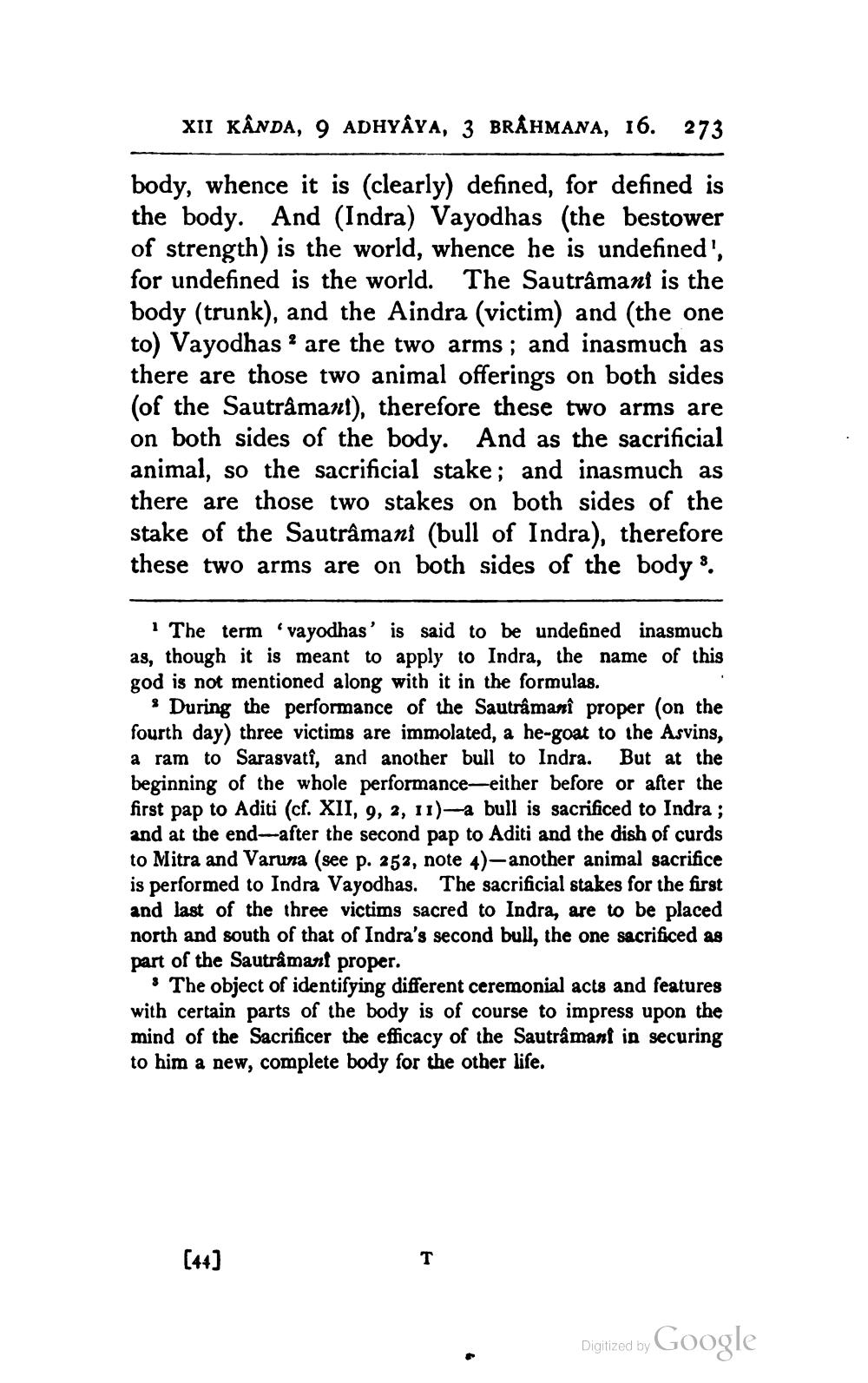________________
XII KÂNDA, 9 ADHYAYA, 3 BRÂHMANA, 16. 273
body, whence it is clearly) defined, for defined is the body. And (Indra) Vayodhas (the bestower of strength) is the world, whence he is undefined', for undefined is the world. The Sautrâmant is the body (trunk), and the Aindra (victim) and (the one to) Vayodhas ? are the two arms; and inasmuch as there are those two animal offerings on both sides (of the Sautrâmant), therefore these two arms are on both sides of the body. And as the sacrificial animal, so the sacrificial stake; and inasmuch as there are those two stakes on both sides of the stake of the Sautrâmani (bull of Indra), therefore these two arms are on both sides of the body 8.
1 The term 'vayodhas' is said to be undefined inasmuch as, though it is meant to apply to Indra, the name of this god is not mentioned along with it in the formulas.
. During the performance of the Sautrâmanî proper (on the fourth day) three victims are immolated, a he-goat to the Asvins, a ram to Sarasvati, and another bull to Indra. But at the beginning of the whole performance either before or after the first pap to Aditi (cf. XII, 9, 2, 11)--a bull is sacrificed to Indra ; and at the end-after the second pap to Aditi and the dish of curds to Mitra and Varuna (see p. 252, note 4)- another animal sacrifice is performed to Indra Vayodhas. The sacrificial stakes for the first and last of the three victims sacred to Indra, are to be placed north and south of that of Indra's second bull, the one sacrificed as part of the Sautrâmant proper.
• The object of identifying different ceremonial acts and features with certain parts of the body is of course to impress upon the mind of the Sacrificer the efficacy of the Sautramani in securing to him a new, complete body for the other life.
[44]
Digitized by Google




